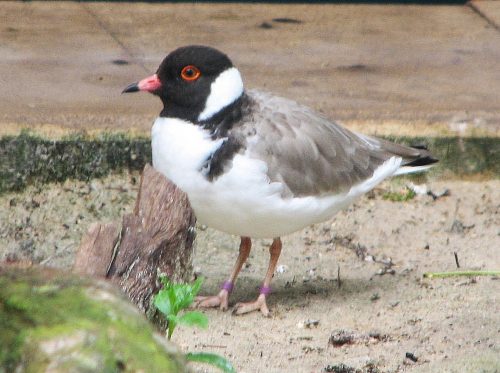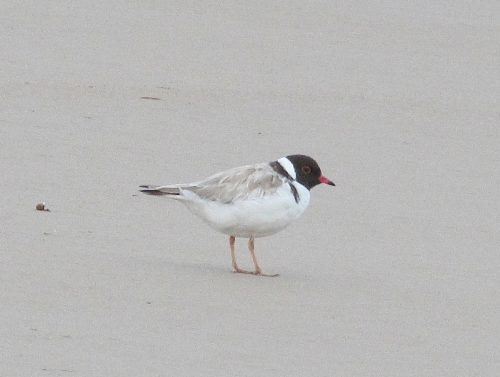An appeal to save our Hooded Plovers
Here in South Australia, there has been some interest generated in the media in recent weeks about the plight of the Hooded Plover. A pair of this species was found to be nesting on one of our popular beaches. There was much concern over protecting the eggs from damage or predation.
This tiny bird is widespread along the coast of South Australia and all of southern Australia, including Tasmania. Nowhere is it common, and everywhere it is threatened. It is estimated that fewer than 2500 of these lovely birds exist. And during the summer months, when they nesting, they are most vulnerable.
During the summer months, when they nesting, they are most vulnerable. They make their nest by making a small depression in the beach sand. In this hollow, they lay and hatch their eggs. Surveys have shown that as few as only 2.5% of eggs actually make it to adulthood. That is a shocking statistic; it is NOT a typo.
The eggs can be damaged in many ways:
- The eggs can be trampled on by people, dogs, horses or vehicles (we still have some beaches with car access here in South Australia – all in Hooded Plover nesting areas).
- Overheating when the eggs are exposed to the burning sun after the adult is scared from the nest.
- Eggs left too long and becoming too cold without the warmth of the adult sitting. This also happens when the adult is chased from the nest by the presence of humans, dogs, and other animals.
- The eggs can also be taken by predators such as foxes, cats, ravens, magpies, gulls and eagles.
If the eggs survive to hatch, the young can die:
- By being run over by vehicles, or stepped on by humans.
- Eaten by predators like foxes, cats, and birds of prey.
What you can do
You may be thinking that you can’t do much to save these, and other, threatened birds.
Think again.
Just by being aware of our wildlife when you go to the beach this summer, and drawing the plight of birds like the Hooded Plover to the attention of family, friends and other beach goers, you can do your bit to save them for future generations.
Donate
I don’t often make appeals for money on this site; in fact, I am sure I have never done so. This is different. Birdlife Australia is running a special appeal for these little birds this summer. You can donate here.
Become a Member
Why not become a member of Birdlife Australia? I have been a member for many decades. They pour large amounts of money into bird conservation, advocacy and research. Membership also provides you with discounts on a range of products and services, and you get their colourful quarterly magazine as well. You can join here.
Further reading:
Good birding,
Trevor
Birding on Yorke Peninsula, South Australia
Over the last weekend my wife and I had a short four day holiday on Yorke Peninsula. We stayed in a holiday unit at Edithburgh, about a four hour drive from our home. Edithburgh is a small town near the bottom of the peninsula, directly opposite Adelaide which is on the other side of Gulf St Vincent.
It has been far too many years since our last visit. The peninsula offers some interesting birding with mixed farming covering most of the region, mainly wheat and sheep. There are also remnant mallee scrub areas, particularly in the south and of course the long coast line offers good birding opportunities where there is access to the beaches. One major goal was to spend time in Innes National Park on the southern tip of the peninsula.
On this visit I didn’t anticipate making a long list of birds seen. Many of the migratory seabirds have long since flown to warmer parts in the northern hemisphere. In another blow, the weather forecast was far from promising good birding; gale force winds and rain. Still, we had a booking in one of the many holiday units and we were looking for a relaxing break regardless of what was thrown at us.
I didn’t see any of my target birds: Mallefowl, Western Whipbird and Hooded Plover, but I still managed some great birds, including Crested Bellbird, Blue Bonnet parrot, Rock Parrot and great views of Ospreys.
Over the coming days I will share some of my sightings, along with the usual photographs.
Hooded Plover, Victor Harbor
On a recent visit to Victor Harbor on the south coast of South Australia we were staying with friends for a few days. We’d been for several drives and in the evening we went for a walk along the Hindmarsh River to beach. It’s a quiet walk along this small river but there weren’t too many birds showing themselves as we went along.
On the beach however, right next to the mouth of the river, a solitary Hooded Plover was scuttling along the edges of the river and on the beach. I managed several reasonable photos before it flew off.
This species is widespread along the southern coast of Australia but is not common anywhere. In fact, it is on the endangered list because there are so few of them. This beach – one of the busiest in South Australia – is one of its strongholds and is known to nest in the dunes along the sea front.
It’s great seeing – and being able to photograph – such a rare species.
Hooded Plover
The Hooded Plover is found along the southern coast of Australia, from Tasmania, though Victoria, South Australia and southern Western Australia. Its preferred habitat is sandy beaches where there is plenty of seaweed and there are nearby rocky outcrops, reefs and sand dunes. In some parts it can be found at salt lakes some distance inland in SA and WA. It lays its 2 or 3 eggs in a shallow scrape in the beach sand during the months of September to January.
The Hooded Plover is an endangered species. On the Fleurieu Peninsula near where I live there are fewer than 75 left, according the warning sign near the beach at Victor Harbor (see below). On a visit to Victor Harbor some years ago I was walking along this beach watching over about 60 primary school children on an end of year school camp. Trying to keep so many little feet away from the nest with two eggs took a major effort, but the birds patrolling the beach nearby were not too disturbed. Why they chose one of the busiest beaches in South Australia to lay their eggs is a mystery to me! I hope they survived.
The bird in the photo above was not taken at the beach. It was of a bird in an aviary at Adelaide Zoo where the keepers have cleverly recreated a small sandy beach to imitate its natural habitat.
Worldwide Waders web site
I find identifying waders and shorebirds can be a very confusing pursuit. So many of our Australian wading birds look very similar in the field. I try to take note of the major characteristics of the plumage, consider carefully the size and shape, watch the habits of the bird in question and think I know what it is. Going to the field guides just confuses the issue all over again. [sigh]
If you see plenty of this kind of bird, or you want to learn more about waders and shorebirds, go to WorldWaders Posterous. This blog features wading birds from all over the world. Plenty of good photos are posted there too.

Red-kneed Dotterel








